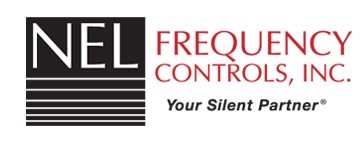Micro Electric Automotive Market Status and Trend Analysis 2017-2026
- Report Code : 99S2215775
- Published On: Dec, 2020
- Category : Automotive & Transportation
- Pages : 139
-
Summary
Further key aspects of the report indicate that:
Chapter 1: Research Scope: Product Definition, Type, End-Use & Methodology
Chapter 2: Global Industry Summary
Chapter 3: Market Dynamics
Chapter 4: Global Market Segmentation by region, type and End-Use
Chapter 5: North America Market Segmentation by region, type and End-Use
Chapter 6: Europe Market Segmentation by region, type and End-Use
Chapter 7: Asia-Pacific Market Segmentation by region, type and End-Use
Chapter 8: South America Market Segmentation by region, type and End-Use
Chapter 9: Middle East and Africa Market Segmentation by region, type and End-Use.
Chapter 10: Market Competition by Companies
Chapter 11: Market forecast and environment forecast.
Chapter 12: Industry Summary.
The global Micro Electric Automotive market has the potential to grow with xx million USD with growing CAGR in the forecast period from 2021f to 2026f.
Based on the type of product, the global Micro Electric Automotive market segmented into
Lead-Acid Battery Vehicle
Lithium-Ion Battery Vehicle
Based on the end-use, the global Micro Electric Automotive market classified into
Personal Use
Commercial Use
Public Utilities
Based on geography, the global Micro Electric Automotive market segmented into
North America [U.S., Canada, Mexico]
Europe [Germany, UK, France, Italy, Rest of Europe]
Asia-Pacific [China, India, Japan, South Korea, Southeast Asia, Australia, Rest of Asia Pacific]
South America [Brazil, Argentina, Rest of Latin America]
Middle East & Africa [GCC, North Africa, South Africa, Rest of Middle East and Africa]
And the major players included in the report are
Yogomo
Shifeng
Textron
Dojo
Byvin
Polaris
Lichi
Baoya
Tangjun
Yamaha
Fulu
Xinyuzhou
GreenWheel EV
Incalu
Kandi
Renault
APACHE
Garia
Zheren
Ingersoll Rand
CitEcar Electric Vehicles
Eagle
Taiqi
-
With tables and figures helping analyze worldwide Micro Electric Automotive market, this research provides key statistics on the state of the industry and is a valuable source of guidance and direction for companies and individuals interested in the market.
1 RESEARCH SCOPE1.1 Research Product Definition
1.2 Research Segmentation
1.2.1 Product Type
1.2.2 Main product Type of Major Players1.3 Demand Overview
1.4 Research Methodology
2 GLOBAL MICRO ELECTRIC AUTOMOTIVE INDUSTRY2.1 Summary about Micro Electric Automotive Industry
2.2 Micro Electric Automotive Market Trends
2.2.1 Micro Electric Automotive Production & Consumption Trends
2.2.2 Micro Electric Automotive Demand Structure Trends2.3 Micro Electric Automotive Cost & Price
3 MARKET DYNAMICS3.1 Manufacturing & Purchasing Behavior in 2020
3.2 Market Development under the Impact of COVID-19
3.2.1 Drivers
3.2.2 Restraints
3.2.3 Opportunity
3.2.4 Risk
4 GLOBAL MARKET SEGMENTATION4.1 Region Segmentation (2017 to 2021f)
4.1.1 North America (U.S., Canada and Mexico)
4.1.2 Europe (Germany, UK, France, Italy, Rest of Europe)
4.1.3 Asia-Pacific (China, India, Japan, South Korea, Southeast Asia, Australia, Rest of Asia Pacific)
4.1.4 South America (Brazil,, Argentina, Rest of Latin America)
4.1.5 Middle East and Africa (GCC, North Africa, South Africa, Rest of Middle East and Africa)4.2 Product Type Segmentation (2017 to 2021f)
4.2.1 Lead-Acid Battery Vehicle
4.2.2 Lithium-Ion Battery Vehicle4.3 Consumption Segmentation (2017 to 2021f)
4.3.1 Personal Use
4.3.2 Commercial Use
4.3.3 Public Utilities
5 NORTH AMERICA MARKET SEGMENT5.1 Region Segmentation (2017 to 2021f)
5.1.1 U.S.
5.1.2 Canada
5.1.3 Mexico5.2 Product Type Segmentation (2017 to 2021f)
5.2.1 Lead-Acid Battery Vehicle
5.2.2 Lithium-Ion Battery Vehicle5.3 Consumption Segmentation (2017 to 2021f)
5.3.1 Personal Use
5.3.2 Commercial Use
5.3.3 Public Utilities5.4 Impact of COVID-19 in North America
6 EUROPE MARKET SEGMENTATION6.1 Region Segmentation (2017 to 2021f)
6.1.1 Germany
6.1.2 UK
6.1.3 France
6.1.4 Italy
6.1.5 Rest of Europe6.2 Product Type Segmentation (2017 to 2021f)
6.2.1 Lead-Acid Battery Vehicle
6.2.2 Lithium-Ion Battery Vehicle6.3 Consumption Segmentation (2017 to 2021f)
6.3.1 Personal Use
6.3.2 Commercial Use
6.3.3 Public Utilities6.4 Impact of COVID-19 in Europe
7 ASIA-PACIFIC MARKET SEGMENTATION7.1 Region Segmentation (2017 to 2021f)
7.1.1 China
7.1.2 India
7.1.3 Japan
7.1.4 South Korea
7.1.5 Southeast Asia
7.1.6 Australia
7.1.7 Rest of Asia Pacific7.2 Product Type Segmentation (2017 to 2021f)
7.2.1 Lead-Acid Battery Vehicle
7.2.2 Lithium-Ion Battery Vehicle7.3 Consumption Segmentation (2017 to 2021f)
7.3.1 Personal Use
7.3.2 Commercial Use
7.3.3 Public Utilities7.4 Impact of COVID-19 in Europe
8 SOUTH AMERICA MARKET SEGMENTATION8.1 Region Segmentation (2017 to 2021f)
8.1.1 Brazil
8.1.2 Argentina
8.1.3 Rest of Latin America8.2 Product Type Segmentation (2017 to 2021f)
8.2.1 Lead-Acid Battery Vehicle
8.2.2 Lithium-Ion Battery Vehicle8.3 Consumption Segmentation (2017 to 2021f)
8.3.1 Personal Use
8.3.2 Commercial Use
8.3.3 Public Utilities8.4 Impact of COVID-19 in Europe
9 MIDDLE EAST AND AFRICA MARKET SEGMENTATION9.1 Region Segmentation (2017 to 2021f)
9.1.1 GCC
9.1.2 North Africa
9.1.3 South Africa
9.1.4 Rest of Middle East and Africa9.2 Product Type Segmentation (2017 to 2021f)
9.2.1 Lead-Acid Battery Vehicle
9.2.2 Lithium-Ion Battery Vehicle9.3 Consumption Segmentation (2017 to 2021f)
9.3.1 Personal Use
9.3.2 Commercial Use
9.3.3 Public Utilities9.4 Impact of COVID-19 in Europe
10 COMPETITION OF MAJOR PLAYERS10.1 Brief Introduction of Major Players
10.1.1 Yogomo
10.1.2 Shifeng
10.1.3 Textron
10.1.4 Dojo
10.1.5 Byvin
10.1.6 Polaris
10.1.7 Lichi
10.1.8 Baoya
10.1.9 Tangjun
10.1.10 Yamaha
10.1.11 Fulu
10.1.12 Xinyuzhou
10.1.13 GreenWheel EV
10.1.14 Incalu
10.1.15 Kandi
10.1.16 Renault
10.1.17 APACHE
10.1.18 Garia
10.1.19 Zheren
10.1.20 Ingersoll Rand
10.1.21 CitEcar Electric Vehicles
10.1.22 Eagle
10.1.23 Taiqi10.2 Micro Electric Automotive Sales Date of Major Players (2017-2020e)
10.2.1 Yogomo
10.2.2 Shifeng
10.2.3 Textron
10.2.4 Dojo
10.2.5 Byvin
10.2.6 Polaris
10.2.7 Lichi
10.2.8 Baoya
10.2.9 Tangjun
10.2.10 Yamaha
10.2.11 Fulu
10.2.12 Xinyuzhou
10.2.13 GreenWheel EV
10.2.14 Incalu
10.2.15 Kandi
10.2.16 Renault
10.2.17 APACHE
10.2.18 Garia
10.2.19 Zheren
10.2.20 Ingersoll Rand
10.2.21 CitEcar Electric Vehicles
10.2.22 Eagle
10.2.23 Taiqi10.3 Market Distribution of Major Players
10.4 Global Competition Segmentation
11 MARKET FORECAST11.1 Forecast by Region
11.2 Forecast by Demand
11.3 Environment Forecast
11.3.1 Impact of COVID-19
11.3.2 Geopolitics Overview
11.3.3 Economic Overview of Major Countries
12 REPORT SUMMARY STATEMENT
-
The Micro Electric Automotive Market has been segregated into various crucial divisions including applications, types, and regions. Each market segment is intensively studied in the report contemplating its market acceptance, worthiness, demand, and growth prospects. The segmentation analysis will help the client to customize their marketing approach to have a better command of each segment and to identify the most prospective customer base.
Report Objectives / Segmentation Covered :
By Companies / players:
By Regions:
By Type:
By Application:
Frequently asked questions(FAQ's):
As manufacturers prepare to scale up, Micro Electric Automotive companies must be clear and transparent about the impact of such volatility on the balance sheet.
From 2025 to 2030, the Micro Electric Automotive Market is expected to grow at a compound annual growth rate of YY%, reaching a value of USD XXX Million.
Yes, the add-on segmentation is available in the premium customised version of the Micro Electric Automotive Market report for a more in-depth analysis. It aids in the calculation of refined and precise market values.
The majority of data for the Micro Electric Automotive Industry is gathered through primary sources, which include interviews and surveys with industry experts from the core and related industries involved in the supply chain. Secondary sources, such as SEC filings, annual reports, whitepapers, and press releases, are also used.















